Donald Trump and Elon Musk are behaving as if the federal government is a rent-by-the-hour rage room where they can “experience the thrill of smashing stuff.”
But their sledgehammer swings are taking down their fellow Americans and destroying useful tools that, when deployed strategically, have been key to U.S. national and economic security for decades. And their actions offer up that toolbox to China and Russia not at fire-sale prices, but gratis.
Why did the Musk-Trump Ragers stake out the U.S. Agency for International Development (USAID) as the initial demolition site? For one, it’s an easy target with relatively little immediate impact on Americans: cuts to USAID are not synonymous with cuts to defense or entitlements. They also tapped into frustrations across administrations since the agency was created more than 60 years ago: USAID consistently attracts career staff with a moralistic zeal for providing direct aid to those who are desperate for it, and generally share a deep belief in the rightness of their case. As a result, they are often less attuned to geo-strategic interests and politics that inform the use of assistance as an important tool to achieve U.S. policy goals. Presidents and cabinet secretaries have long struggled to find routes to accelerate USAID’s ability to respond to White House policy directionals, and have faced almost inevitable tensions given the nature of the workforce drawn to the agency’s mission.
There were reasonable paths available to help lessen this tension, absent the effective elimination of foreign aid as a lever to achieve U.S. objectives. For example, the Clinton administration in 1998 and George W. Bush administration in 2006 each took structural measures to place USAID under the direction of the State Department. While rhetorically the Trump-Musk duo mimicked these prior Clinton and Bush structural moves, “dual-hatting” the Secretary of State as USAID Administrator, in practice, they put Secretary Rubio in charge of an empty box. By eliminating most of the foreign assistance workforce and funding, the Trump administration offered a disingenuous cover to destroy the agency and its ability to execute its work. And its actions effectively unilaterally disarmed the United States—to the benefit of our adversaries and competitors.
Where USAID began.
President John F. Kennedy created USAID via executive order more than 60 years ago. The order was intended to clarify how myriad foreign assistance and economic development tools could be used to serve U.S. interests, including using USAID as a subsidiary entity of the State Department that would be a vehicle for disbursement and delivery of economic, development, food and other humanitarian aid. “Existing foreign aid programs and concepts are largely unsatisfactory and unsuited for our needs and the needs of the underdeveloped world,” Kennedy said at the time. “…The economic collapse of those free but less-developed nations which now stand poised between sustained growth and economic chaos would be disastrous to our national security, harmful to our comparative prosperity and offensive to our conscience.”
The decades since have brought varied changes in thought and action on how to most effectively deploy the agency as an effective tool for advancing America’s economic and security interests while doing good, and being seen to do good, around the world; this is the essence of soft power strength. Under President Bill Clinton, the National Performance Review, renamed in his second term as the National Partnership for Reinventing Government, resulted in reductions in the federal workforce and reassessments in how to improve the efficiency of existing agencies and delivery of services. Reorganizing agencies with foreign policy roles was discussed as part of that review, within the Executive Branch and with Capitol Hill. This conversation ultimately led to the 1998 Foreign Affairs Reform and Restructuring Act, along with resulting executive action to shift management lines at USAID to put it more squarely under the authority of the Secretary of State. This reorganization, and the considered review with Congress that preceded it, illustrated intense deliberation on how to better deploy key U.S. resources. Such careful deliberation offers a sharp contrast with team Trump, notwithstanding the “reorganized” historical recollection offered by some commentators.
When, as noted, the structural adjustments made by President Clinton’s administration were determined not sufficient to meet the needs of Bush 43, the Bush team similarly studied, consulted, and then executed. In 2006, Secretary of State Condoleezza Rice announced plans to reform the State Department and USAID with the goals of better aligning policy goals with aid allocation and eliminating wasted resources. She described the changes as an effort to bring the foreign assistance programs into line with the Bush administration’s push to spread democracy, or “transformational diplomacy.”
Some of these changes were lasting: for example, the coordination of foreign assistance across the U.S. government, including at USAID, is still administered through the director of foreign assistance at the Department of State. In the Obama, Trump 45, and Biden administrations, that position was held by a deputy-assistant-secretary equivalent level official, who rarely had a seat at the National Security Council deputies or principals meetings where policy challenges are discussed and recommendations made; the USAID Administrator was at the table.
For all the reasons detailed, there is significant tension and difficulty in USAID’s tasking: delivering a wide range of assistance effectively, with adequate executive and legislative oversight, often in crisis situations, and where there may be disagreement among those with oversight on how best to execute sometimes conflicting directions. It is not surprising that sequential administrations tried to adjust delivery mechanisms or directions. It also is not surprising that they consulted carefully with legislators and others in doing so, given the consensus on the underlying value, and potential value, of the resources at stake.
But in 2025, even that consensus has been destroyed. Project 2025, a self-described “conservative playbook” to “take down the Deep State and return government to the people,” includes chapters on State and USAID. These similarly argued to place USAID more firmly under the direction of the State Department—but even Project 2025 did not venture to fire 95% of the USAID staff and freeze all foreign assistance. Instead, with zero consultation with Congress—which had passed the legislation that created the mechanisms to deliver foreign aid, and provided the funding for it—and without any individual with experience in administering these programs, team Trump unilaterally decimated the organization.
There are sound arguments for refashioning USAID to meet a time that has changed considerably from that for which a post-cold war foreign aid strategy was designed. The United States can improve its ability to “push back against Chinese and Russian influence and to prevent transnational threats, such as disease and terrorism, from reaching U.S. soil,” writes Andrew Natsios, George W. Bush’s first USAID Administrator, in Foreign Affairs. But gutting USAID totally kneecaps that ability.
What’s gutted?
Even with episodic debates on how to make USAID more effective, America’s ability to lead the world has been buttressed significantly by the inter-connected military, economic, development, humanitarian, and disaster relief resources it has provided since World War II. But under a new Trump Administration, key components of this resource equation are in jeopardy.
Food assistance.
In 1954, President Dwight D. Eisenhower signed into law what is commonly known as Public Law 480, or Food for Peace. The U.S. first provided food aid much earlier, sending $50,000 in wheat flour to Venezuela in 1812 and hundreds of millions of dollars of grain, corn, milk, and other supplies to the victims of the World Wars. But Eisenhower’s Food for Peace provided an established structure within the U.S. government to supply food aid with U.S. agricultural surpluses in a way that would fight world hunger, expand trade, and support U.S. foreign policy. Kennedy furthered this effort, appointing George McGovern as its first director—as a Special Assistant to the President. He did this second part, rather than situating McGovern within the agriculture department or another administering agency, because Kennedy wanted to redirect the program’s focus from surplus liquidation of farmers’ produce to maximizing its foreign policy impacts. President Lyndon B. Johnson then signed the Food for Peace Act of 1966 to “provide American food and fiber to stimulate greater productivity in the developing countries.” Through the Act, Johnson aimed ultimately to increase international self-sufficiency in food production through incentivizing recipient countries to show how they were improving their own capacities to provide food for their people, to qualify for U.S. supplies in the immediate. This was intended to ensure against widespread starvation in a world whose population was growing exponentially more quickly than even a robust U.S. agricultural industry could supply.
Until President Trump and Elon Musk eviscerated USAID, farmers, businesses, universities and nonprofits from states around the country partnered with USAID to provide food aid and innovative agricultural techniques across the globe. For perspective on what is wiped out, or at best, frozen, with tons of food going to waste at ports at around the world, last fiscal year, USAID’s Feed the Future program purchased 1.1 million metric tons of sorghum, corn, beans, rice, vegetable oil, and other food from U.S. farmers and ranchers, for distribution to 45 million people in 35 countries.
PEPFAR.
Among the truly meritorious, significant return on investment programs decimated by the Musk-Trump actions is the President’s Emergency Plan for AIDS Relief (PEPFAR). Established by President Bush and Congress in 2003, through the initiative the U.S. has invested more than $100 billion in the global AIDS response, saving more than 25 million lives. But while Secretary of State Marco Rubio has stated that PEPFAR was one of several “life-saving” programs that would continue, in fact the payment systems and other mechanisms necessary to provide this aid have, per the most recent reporting, been halted.
Middle East.
Assistance USAID has provided to the Middle East offers a prime example of how the agency, across administrations, has helped to further U.S. geostrategic interests and objectives. When I served as assistant administrator for the Middle East at USAID, that bureau was responsible for nearly $2 billion, and a bulk of the funds were delivered through the economic security fund (ESF) account, administered by USAID but at the specific direction of the State Department in terms of amount and purpose.
By way of illustration: many know the 1979 peace treaty between Egypt and Israel as a crowning achievement of Jimmy Carter’s presidency. Though it may be at risk in the current moment, that peace agreement has held up through decades. It has spared the parties, and those who would be called upon to support each, engagement in military conflict that would have been extraordinarily costly, in blood and treasure. Among the reinforcing components of that deal was a commitment at the time for $4 billion in economic and military aid to be provided to the two countries by the United States; the economic funding has long been administered by USAID.
Support for Palestinians also comes largely through USAID-administered funds. Though it is difficult to imagine now, in the early 2000s a window of opportunity emerged for strengthening the Palestinian Authority in a way that would significantly increase the Palestinians’ ability to develop and sustain a future state. This effort took off under President George W. Bush, when Salam Fayyad was named as PA finance minister, and later became prime minister. With Fayyad as prime minister, USAID administered, at the direction of the White House and State Department, substantial direct budget support to the PA, and increased the scope and nature of programs that supported improved water and electricity supplies, and bolstered private sector economic growth efforts.
While the direct budget support ended soon after Fayyad’s departure, USAID supplied tens of millions of dollars in humanitarian relief to Palestinians living in Gaza under Hamas, worked with other international partners to ensure adequate clean water in the West Bank and Gaza, and worked to nurture agricultural practices and small businesses that in turn might create more jobs and less dependency on sending workers into Israel—all measures to show that the U.S. was a good partner, focused on increasing safety and security for Palestinians and Israelis alike.
By dismantling entirely the USAID mission in Jerusalem, as the Musk-Trump actions have, the United States no longer has the personnel, know-how, and networks necessary to keep pathways available to a future Palestinian state, which even President Trump, as detailed in his January 2020 Peace to Prosperity initiative, saw as necessary for Israel’s future security and stability, and to support shared U.S. interests in regional security.
Latin America aid.
Since the early 1960s under President Kennedy, the U.S. has viewed assistance to Latin America as an important component of competing more effectively against other great powers. In Kennedy’s time, that meant an anti-poverty initiative to counter Soviet and Cuban influence. While this initiative failed to meet many of its goals, and lacked the Congressional funding Kennedy had sought, it supported the construction of housing, schools, airports, hospitals, clinics and water-purification projects, and distributed textbooks to students, all of which built political capital for the United States in the region.
U.S. presence in Latin America also has vast implications for our own Southern border. Though arguably far too late, the Biden administration recognized that part of addressing U.S. immigration challenges required going to the source. As a result, the Biden administration’s budget request for FY2025 included more than $600 million to support the basic needs and economic and social integration of migrants, refugees, and other vulnerable displaced people across Latin America, to help them build lives where they were, and dissuade them from engaging in secondary migration to the U.S. southwest border. In May 2024, the State Department cited successes from implementation to date of the 2022 Americas Summit Los Angeles Declaration on Migration and Protection, including allowing more than 2.5 million Venezuelans to work and access health and education services in Colombia, and providing access to clean water for more than 800,000 people in Panama and Costa Rica—programs executed through USAID and State’s Migration and Refugee Bureau. And it appears that migrant flows into the United States at the border with Mexico were at their lowest levels in recent years by the end of 2024.
Humanitarian/disaster aid.
An area of particular USAID technical strength lies in its capacity to execute swiftly complicated humanitarian and disaster relief missions. The agency’s Office of Foreign Disaster Relief averages responses to 65 disasters annually in more than 50 countries, often working in partnership with the U.S. military and other agencies, to ensure that people in dire need as a result of earthquakes, volcanoes, floods, and more receive a lifeline from the United States. In the fall of 2024, the U.S. committed more than $400 million in new humanitarian assistance to help those caught in the civil war in Sudan, including thousands of starving children—and the Trump/Musk aid freeze means that an estimated 600,000 people in that region will now be at risk of catching (and spreading) cholera, malaria, and measles. Nearly $336 million was committed for Palestinians impacted by the conflict in Gaza, and many of the 2 million Palestinians in Gaza are kept alive and in temporary shelters solely through these contributions and those from other international partners. Absent such aid, tens of thousands more will die. And for those who survive, the deep despair over their situation may be deflected from Hamas to Israel, Egypt, the United States and elsewhere.
Back home.
The rage room approach that has reduced USAID to its studs has hurt Americans directly and indirectly. Farmers across the country, operating at the margins, have had federal programs upon which they depend frozen or canceled, including USAID Food for Peace and agricultural research support. Even if the government does not pay for services it already has contracted, farmers, small companies, and nonprofits must still pay those whom they owe—or they declare bankruptcy. So thousands and thousands of Americans are losing their jobs, or losing their companies. And people around the world whom the United States had been helping are dying unnecessarily. And as unnecessary deaths are reported, foreign aid recipients are finding the U.S. to be a less reliable partner each day.
Around the world, China has wasted no time rushing to fill the vacuums that America has left, and they are making sure to take credit. China has provided small amounts of aid for demining in Cambodia, previously covered by USAID. In Colombia, which had received $385 million annually from the United States, China has indicated willingness to fill the void. This month, Colombia announced the opening of a maritime commercial route between its largest port (and the most significant for U.S.-Colombia commerce) and Shanghai, and has made a significant move toward joining China’s Belt and Road Initiative. In Rwanda, where PEPFAR has provided nearly $2 billion to date, China already has made significant health investments, and is poised to make more. Indeed, China’s investments in Africa have surged from $75 million twenty years ago to $5.5 billion. These cut-offs by the United States are not yet a month old. But already the United States has made China the world’s 911 line.
America is a country premised on the strength of the rule of law, and the consistency and fairness in how the laws are applied. This is not a country born to be ruled by decree; that was what America escaped and fought a revolution over. That premise is America’s single most precious commodity, and it needs to be protected.
How to do that? While the American executive seems just fine with the gutting of USAID, the legislative and judicial branches still provide pathways for resistance. Legal action is well underway: Organizations and companies that contract with USAID have sued the government over what they claim are unlawful moves to dismantle it. The American Foreign Service Association and other unions have sued as well. States within our federal system also are taking legal action, suing over Elon Musk’s team’s access to sensitive personnel data, which impact all federal workers, including those at USAID. There are others, and there will be more.
Congress is also standing up. Beyond the protests of Democratic lawmakers over the USAID actions, farm state legislators are introducing legislation to attempt to save Food for Peace by moving it to the Department of Agriculture. This too is likely just the beginning as legislators see and feel the impact of the wrecking ball on constituents.
U.S. foreign aid—while it could use reforms—has long been one of the pillars upholding American credibility and commitment around the world. We need to use the full force of our democracy to protect it from the sledgehammers and those who wield them.
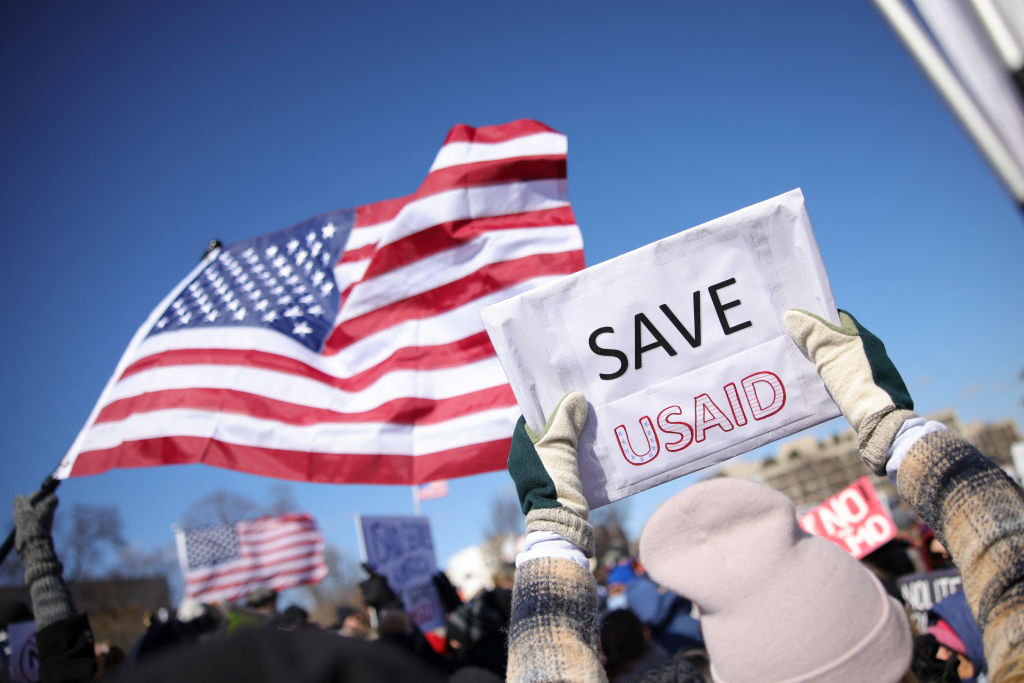
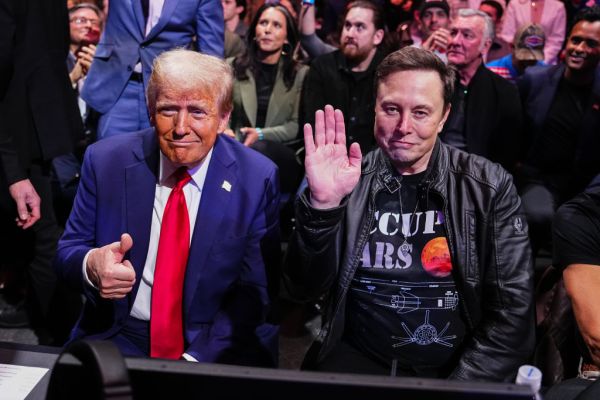
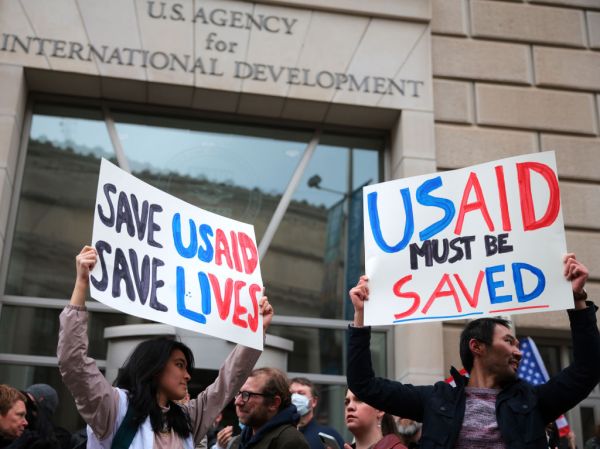
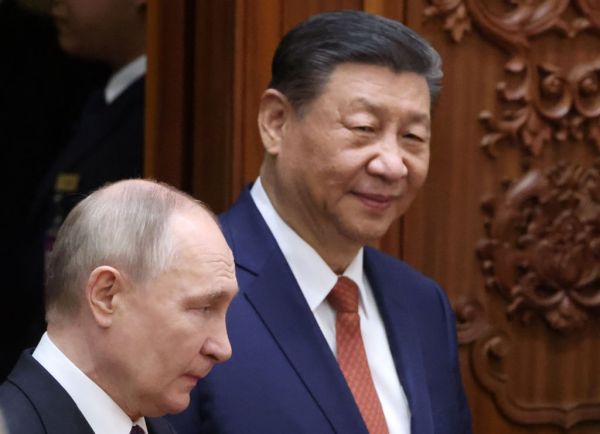


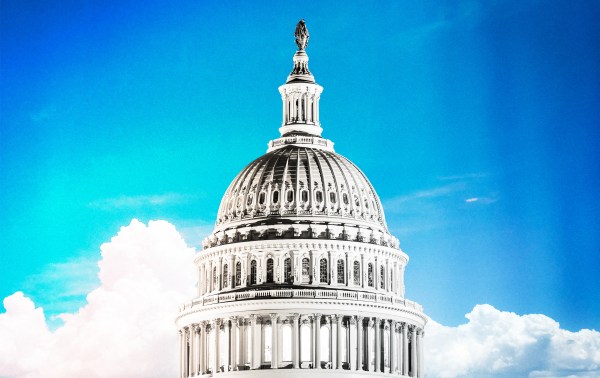


Please note that we at The Dispatch hold ourselves, our work, and our commenters to a higher standard than other places on the internet. We welcome comments that foster genuine debate or discussion—including comments critical of us or our work—but responses that include ad hominem attacks on fellow Dispatch members or are intended to stoke fear and anger may be moderated.
With your membership, you only have the ability to comment on The Morning Dispatch articles. Consider upgrading to join the conversation everywhere.